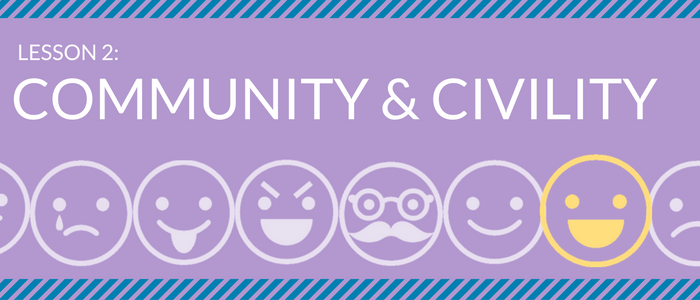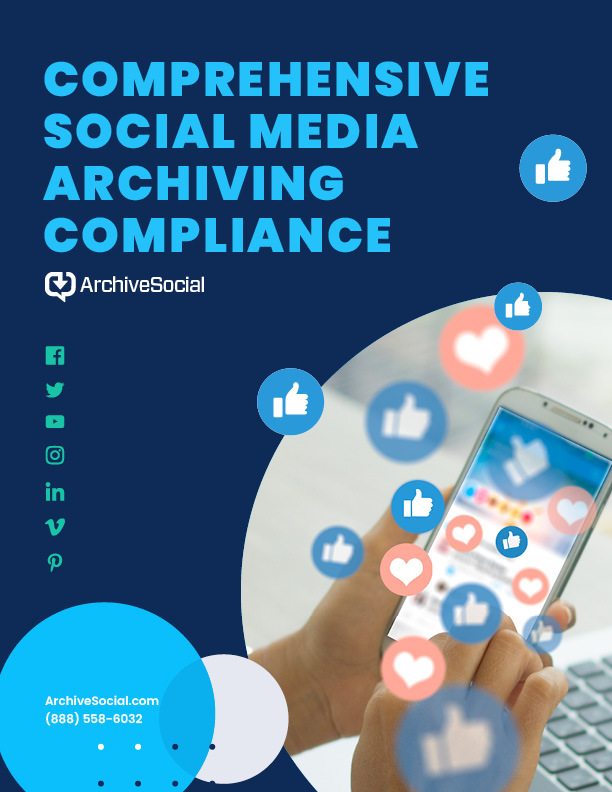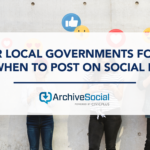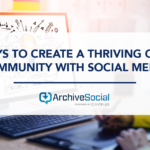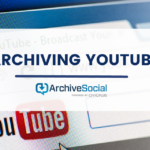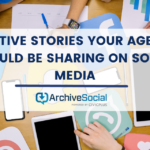Welcome to day two of the Social Media Crash Course for Government Communicators!
In lesson one, you learned how to create your social media policy and get your Facebook and Twitter accounts up and running. Now it’s time for a more advanced topic — how to keep the social media conversation civil and productive.
Social media gives citizens the opportunity to communicate with their government in a way that is familiar and convenient. Residents who may not be able to attend city council meetings or public forums can stay up-to-date with city news via social media. It also makes the decision making process more inclusive. Rather than limiting the conversation to those who can be at a specific place at a time, social media allows citizens to weigh in from anywhere at any time.
Unfortunately, it also opens the door to public criticism, inappropriate comments, and disruptive individuals (commonly called “internet trolls”).
While criticism can be a healthy and necessary part of civic discourse, inappropriate or off-topic comments can be a distraction from the important information being shared on government social media profiles. Internet trolls typically bring discord to online discussions by posting inflammatory comments, sharing misinformation, or otherwise starting arguments on social media and other online forums.
Fortunately, our lesson today will arm you with tips and techniques for taming trolls and maintaining a safe and open space for citizen engagement online.
Comment Moderation
As we’ve already said, the two-way conversation that social media makes possible can also expose your agency to public criticism. While this may sound scary, it actually is one of the biggest benefits of social media — a forum that makes it easy for citizens to express their displeasure is also an excellent forum for addressing this criticism head-on. Social media gives you the opportunity to respond publicly to common questions and complaints and build a reputation as a city that truly listens to its residents.
But what do you do when the conversation starts to get ugly?

To start with, certain categories of speech, including obscenity and direct threats, are not entitled to full protection under the First Amendment. There’s a long history of cases found in favor of censorship of certain terms and phrases, and you are within your rights to disallow these in the limited public forum that is your social media page. You can find a list of the most common exemptions in the social policy template shared in lesson one.
What you don’t have is the right to remove comments based solely on the opinions expressed. If you want to stay on the right side of free speech protections (and we know you do), you cannot remove a comment simply because you don’t agree with it. This distinction is absolutely key, and it is important that you and your team understand it.
This flowchart, adapted from one designed by the government of Wake County, NC, will help you determine if it is okay to remove a post based on the criteria laid out in our policy template.
You can find the original flowchart as well as a more tips for maintaining a civil dialogue on your social media pages in our Comment Moderation Guide.
While a comment moderation policy can help lessen the risk for your public agency on social media, remember that no policy is foolproof. If you do decide to moderate comments, make sure to document what you removed and why. We know you will only remove what is necessary, but if challenged you’ll need the proof. Therefore, the most important step you can take to protect your agency from a lawsuit is to archive records of every post and comment.
Tackling Trolls
Who are the people making these inappropriate comments? Sometimes it’s just regular citizens airing their grievances. And other times it’s people with more sinister intentions.
Trolls are fueled by a variety of motives, including bad experiences with an agency or the desire for online recognition. Historically, most government agencies would ignore trolls. However, as trolls have become more prominent and visible, government agencies that fail to respond appropriately are now subjecting themselves to viral negative exposure, legal liabilities, and major operational challenges.
Know thy foe:
There are different types of trolls that you should be on the lookout for. The two kinds of trolls you’re likely to encounter most often are:
The “Outside Agitator” is a person who is not from your community but is trying to stir up trouble on your social media pages. Comments made by this type of troll are typically motivated by an issue or topic that is playing out on the national stage, and are rarely related to the original post.

There are also commenters who may not be trolls, but can still be responsible for derailing the conversation. For example:
The “Helper” is a well-meaning but misguided commenter who responds to questions from other citizens with incorrect information. In this situation, you should reply to their comment as soon as possible with the correct information, including a link to a official website or source document.
The “Disgruntled Citizen” is not actually a troll, but their comments can cross over into trolling territory if they meet one or more of the following conditions:
- the comment is laced with profanity or other language prohibited by your policy
- the comment is completely unrelated to the original post (e.g. a comment about police misconduct on a post about a new school opening)
- or the same comment is posted multiple times in a row or in response to many different posts.
For best practices on how to deal with these trolls and more, take a look at our Tackling Trolls tip sheet, which features some great advice from Margate, FL Public Information Officer Alison Saffold. In a recent webinar, Saffold discussed how she handled a disgruntled citizen who accused the agency of unfairly targeting and removing her posts from the City’s Facebook page. Watch the webinar to find out how a robust policy, consistent application of that policy, and archiving helped prevent a potential legal headache and allowed the City to successfully neutralize a troll.
Get your copy of the Tackling Trolls Tip Sheet by clicking here (pdf).
Up Next
In the first two sessions of our course, you’ve created your Facebook and Twitter profiles and learned how to keep your social media discussions open, yet civil.
But do you know how to use social media during emergency situations? Up next, we’ll cover social media in crisis communications.
Want more government social media knowledge right now? Check out all of our free resources for public agencies. And if you’re curious about ArchiveSocial’s social media archiving platform, start your free trial today.
We’d also like to invite you to contribute to the growing body of knowledge for government communicators by joining our new Facebook group: #GovClub. We created this space for public agency employees to discuss tips and strategies for communicating on social media. We can’t wait to see you there!

